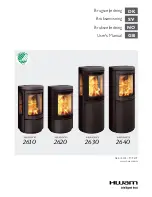
10
7. Position the propane cylinder as shown in the illustration for
table top mode and for free standing mode.
8. Do not use tools. Hand tighten only. When making the
connection, hold the adapter hose in a straight line with
the cylinder valve, and be sure to not cross thread
the connection.
9. Leak test the connections. See “Leak Testing Section.”
10. Refer to lighting instructions.
11. To avoid activating the Flow Limiting Device, when lighting,
open the cylinder valve slowly with the appliance valves off. If
the Flow Limiting Device is accidently activated, turn off the
appliance valves and cylinder valve and wait 10 seconds to
allow the device to reset. Open the cylinder valve slowly, then
open the appliance valve.
PROPANE CYLINDER
The Propane Cylinder is not included with the Zippo
®
Windproof
Stove
™
. QCC
®
valve equipped cylinders are available from your
gas grill dealer or propane supplier. This valve is recognized
by the external threads on the inlet port of the valve.
Any attempt to connect the supplied hose, by use of adapters
or any other means, to any other type of valve could result in
damage, fire or injury and may negate the important safety
features designed into the QCC
®
-1 system.
SPECIFICATION:
1. Any propane cylinders used with this appliance must be
constructed and marked in accordance with the
Specifications for LP Gas Cylinders of the U.S.
Department of Transportation (D.O.T.) or the National
Standard of Canada, CAN/CSA-B339, Cylinders, Spheres
and Tubes for Transportation of Dangerous Goods; and
Commission, as applicable.
2. The propane cylinder used for this appliance must not have a
capacity larger than 20 lb. (9 kg). Approximately 18” (46 cm)
high, or 12” (31 cm) diameter.
3. Any propane cylinders used with this appliance should be
inspected at every filling and re-qualified by a licensed
service outlet at the expiry date (10 years), in accordance
with the DOT (USA) and CTC (Canada) codes for
LP Gas Cylinders.
4. Any propane cylinders used with this appliance must be
provided with a shutoff valve terminating in a cylinder valve
outlet No. 510, specified in the Standard for Compressed
Gas Cylinder Valve Outlet and Inlet Connection (USA) ANSI/
CSA-V-1-1977 (Canada) CSA B96. The cylinder supply
system must be arranged for vapor withdrawal. The cylinder
must include a collar to protect the cylinder valve. The
cylinder must be installed as per assembly instructions.
Never fill the cylinder beyond 80% full. A fire causing death
or serious injury may occur. The cylinder valve must include
a safety relief device having direct communication with the
vapor space of the cylinder.
HANDLING:
1. Government regulations prohibit consumer shipping
propane cylinders.
2. A filled propane cylinder is under very high pressure. Always
handle carefully and transport in the upright position. Protect
the valve from accidental damage.
3. Do not tip the propane cylinder while connecting it to the
regulator. Fasten the cylinder securely during transport,
use and storage.
4. If the cylinder is tipped after it is connected to the
regulator, shut off the gas, disconnect the regulator and
have it checked before using again.
STORAGE:
1. Store the propane cylinder outdoors in a well ventilated place.
2. Do not store the propane cylinder in direct sunlight, near a
source of heat or combustion.
3. If you intend to store the windproof stove indoors,
disconnect and remove the propane cylinder first.
Disconnected cylinders must have a dust cap installed.
Large Propane Cylinders must not be stored in a building,
garage or any other enclosed area.
4. Keep out of the reach of children.
5. When the propane cylinder is connected to the windproof
stove, the windproof stove and propane cylinder must be
stored outside in a well ventilated place.
OPERATION:
1. Never connect your stove to a propane cylinder without the
regulator provided, and
NEVER TO AN
UNREGULATED PROPANE SUPPLY. The gas regulator
supplied with the appliance must be used.
2.
Always leak test the propane cylinder to regulator connection
when connecting the propane cylinder to the appliance. See
“Leak Testing Section”.
3.
DO NOT operate appliance if the smell of propane is present.
Extinguish all flame and determine source of propane before
proceeding.
DO NOT ignite the appliance until the propane
leak has been found and sealed and the area has been
properly ventilated.
4.
Always shut off propane cylinder valve when the appliance is
not in use.
figure 11
Summary of Contents for 44026
Page 2: ...2 ...
Page 5: ...5 4 2 3 2X 2X ...
Page 6: ...6 5 6 7 ...
Page 7: ...7 8 9 10 Free Standing Mode For Optional Leg Assembly ...


































